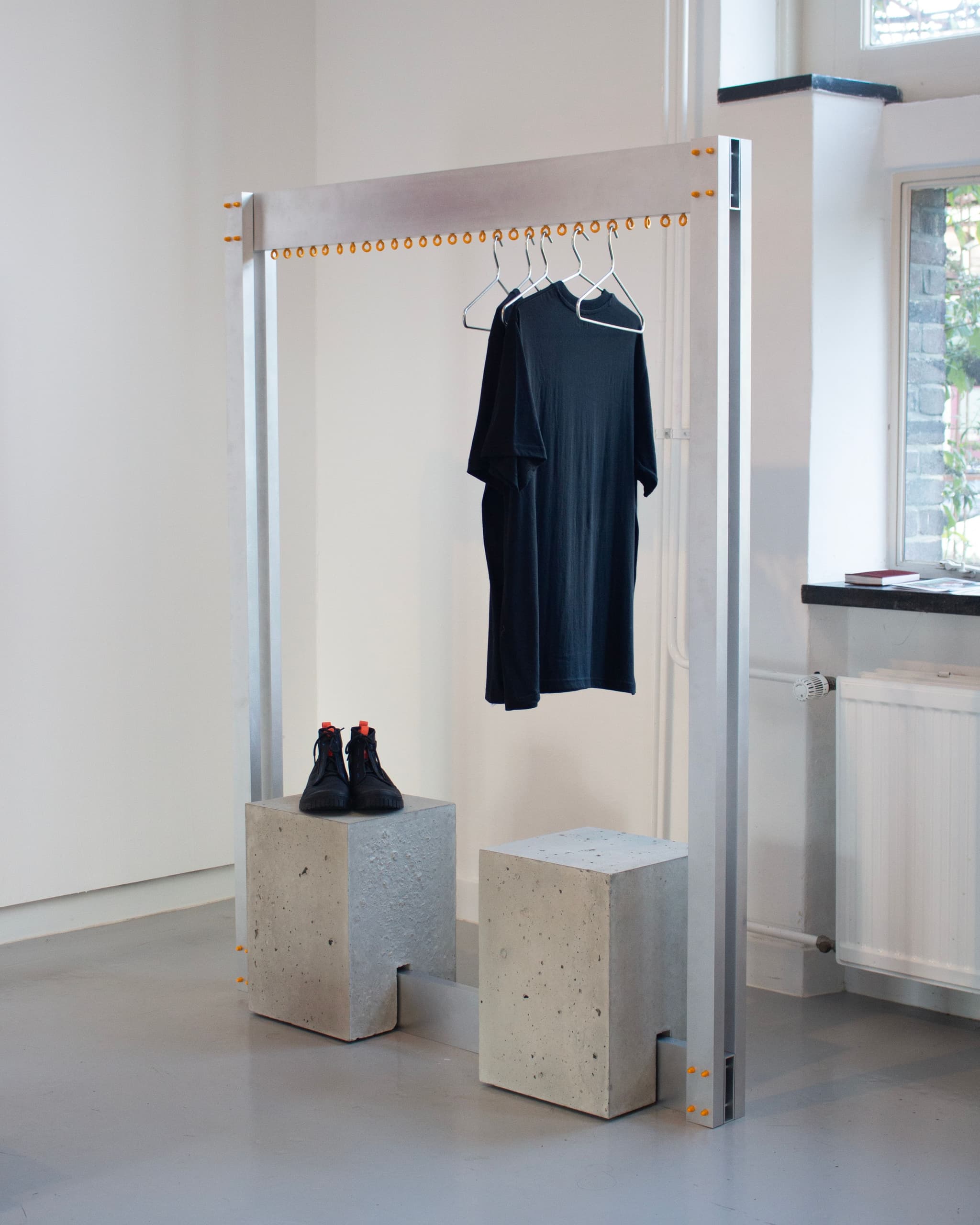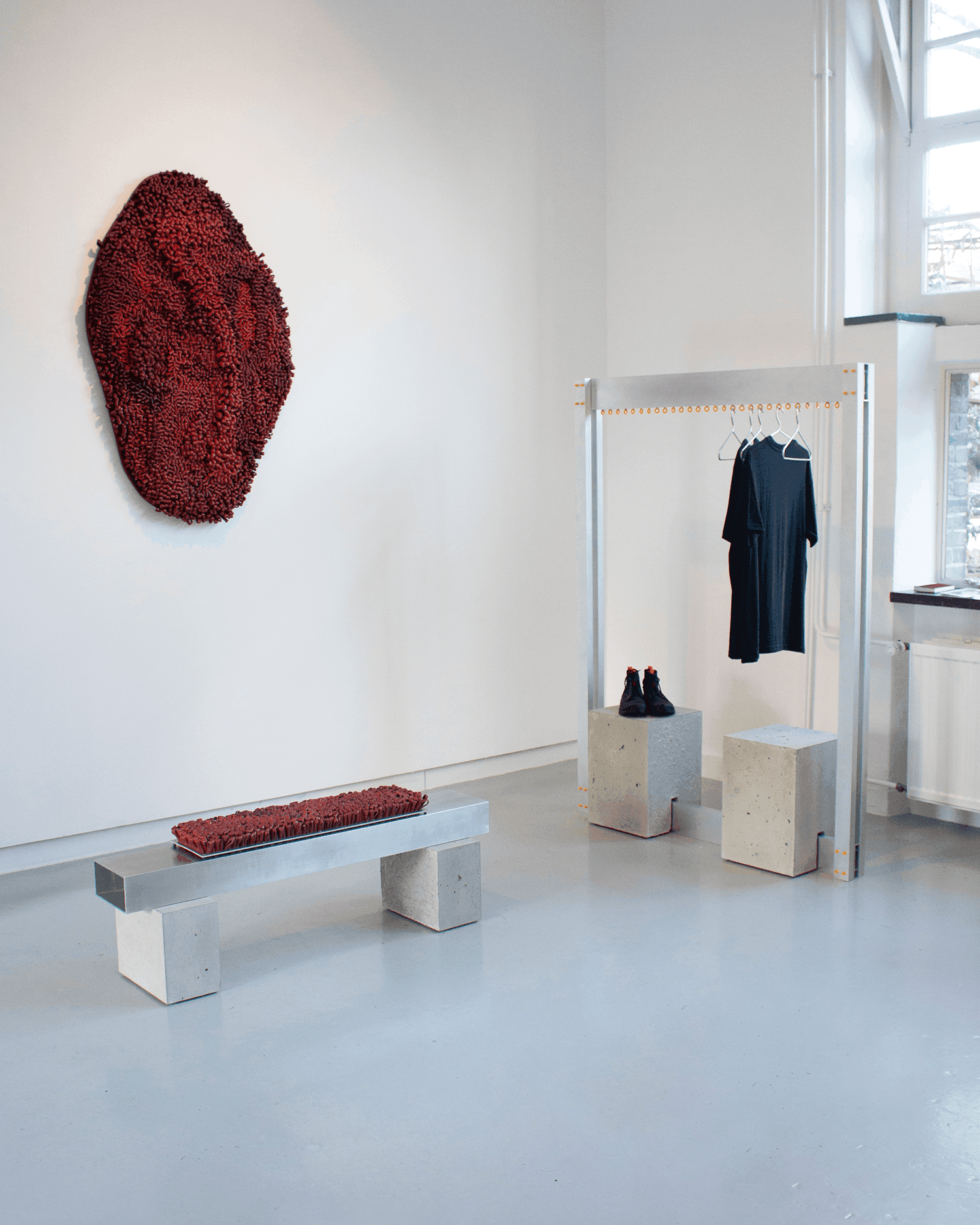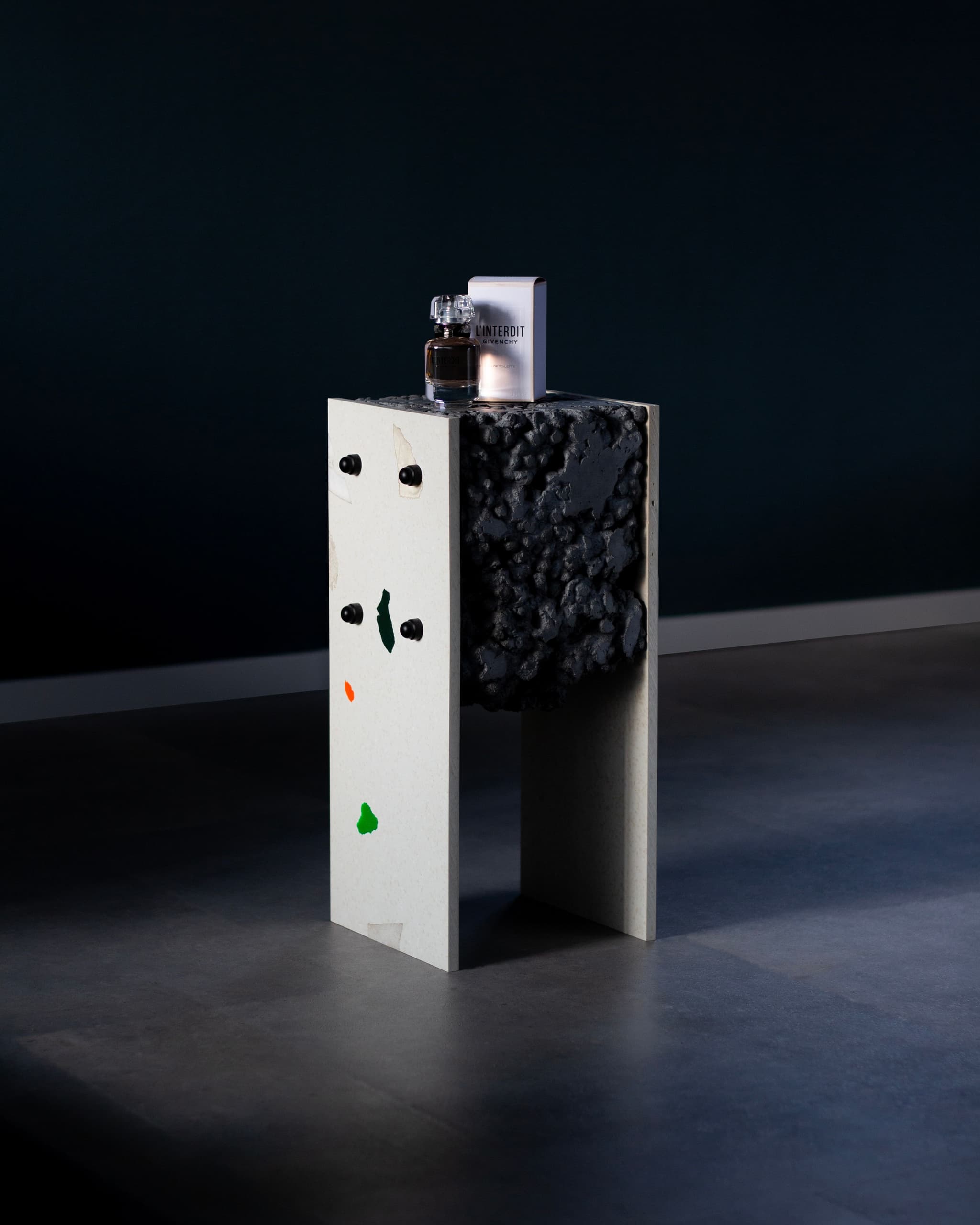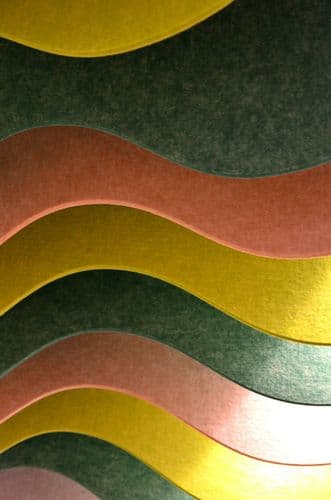Key Points
- BASE uses a bespoke 100% recycled concrete mix sourced from demolition waste via Urban Mine; no virgin input was needed for these pieces.
- Furniture is designed for disassembly and repair, extending life and enabling end-of-life separation and recycling.
- Concrete provides stabilising mass for retail-ready pieces (e.g., clothing rack) while doubling as functional platforms.
- Recycled mix is heavier and ~4× costlier than standard bags, requiring new casting recipes and prompting exploration of hollow elements.
- Aim is to normalise visible, tactile concrete craft, creating demand that can scale availability while keeping material use purposeful.
Full interview with Lisanne Meester
1. Can you elaborate on the process of sourcing and preparing the materials for the BASE project, particularly any challenges faced in ensuring their sustainability and quality?
I believe that sustainability can be incorporated on several levels. The main level I operate on is in making all my furniture pieces in a way that they can be disassembled and separated. This allows room for reparation, making sure they last longer. And when they reach the end of their lifespan, it’s possible to recycle all materials separately and in the right way.
In terms of material use, I’m still exploring how to incorporate sustainability. As a designer, I like to work with building materials, many of which are not sustainable yet. With BASE, it was a challenge to find a more sustainable concrete. This search began when I collaborated with designer Ilse Evers, who prioritizes sustainability in her work. To align with her values, I needed to upgrade the concrete in my pieces.
Eventually, I found Urban Mine, a company that extracts new concrete components from demolished buildings: both aggregate and cement.
2. How did the choice of materials influence the overall design and functionality of the BASE installation?
Especially in the BASE clothing rack, the concrete elements play a functional role. They stabilize the entire structure and create an extra platform for accessories or shoes. I envision both pieces in retail environments, where weight adds security, preventing furniture from falling over or being stolen (e.g., if the bench is outside the store).
Design-wise, I’m pretty free. The main constraints are that everything must be castable in a mold, and any attachments must be embedded during pouring.

3. Were there any innovative techniques employed in manipulating or assembling the materials used in the BASE project?
The company that supplies the concrete uses high-tech machinery to crush and separate ingredients for recycled concrete. They also remove all contaminants not meant to be in the mix.
4. How does the material selection in the BASE project reflect current trends or advancements in sustainable design?
It’s hard to say definitively. I believe that when designers and artists begin to use these materials, it helps them reach a wider audience. Ideally, this creates demand, which can drive prices down and increase availability.
For comparison, a normal 18kg bag of concrete costs me around €10. The recycled concrete is almost four times that. Plus, it’s not easy to source in large quantities or locally.

5. How does the material palette of the BASE project contribute to its environmental impact, particularly in terms of lifecycle and recyclability?
In terms of lifecycle, I design my work to last a long time. Regarding environmental impact, I remind myself I’m just one designer doing my best. While I aim to create sustainable pieces, it's larger companies that hold the power for real systemic change. I also chose this profession because I enjoy building and creating, and if complete sustainability were my only goal, I might have to stop creating altogether!
6. Were there any collaborations with material scientists or manufacturers in the development of the BASE project? If so, how did these collaborations influence material choices?
For the concrete, I collaborated with Urban Mine, a subsidiary of a demolition company. They had access to recyclable materials and developed a new 100% recycled concrete mix specifically for me. While the construction industry still needs to add virgin material to meet regulations, my pieces didn’t require that, so they made an exception. It’s strong—a truck could stand on it!

7. How does the use of these materials in the BASE project challenge or conform to traditional applications in design and architecture?
Typically, beautiful concrete is hidden inside structures. I prefer to highlight the beauty of the material, encouraging others to explore its possibilities. I finish the concrete in a way that invites tactile interaction. While I don’t advocate for more concrete use in architecture, there are better alternatives, I do support celebrating the concrete we do use.

8. Can you describe any limitations or constraints encountered with the chosen materials, and how these were addressed in the design process?
Despite what you might think, concrete isn't just concrete. I had to experiment extensively to get the texture and structure I wanted from the recycled mix. I typically go for an open, rough finish, so I had to rewrite my recipes.
Another challenge was weight. The recycled concrete is much heavier than my usual lightweight mix. I’m exploring ways to make it more movable, such as using hollow structures, which would be more user-friendly and extend its usable life.

9. Looking ahead, how do you envision the materials used in the BASE project influencing future projects or contributing to broader discussions in sustainable design?
I’d love to see concrete reintroduced thoughtfully into our living spaces. It’s a tough material, yes, but when paired with shiny, soft, or colorful materials, it can enhance their aesthetic. I hope to continue exploring material combinations and inspire people to appreciate how things are constructed.








